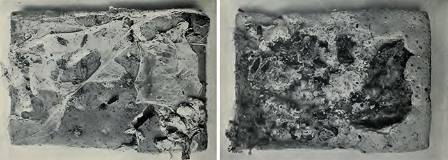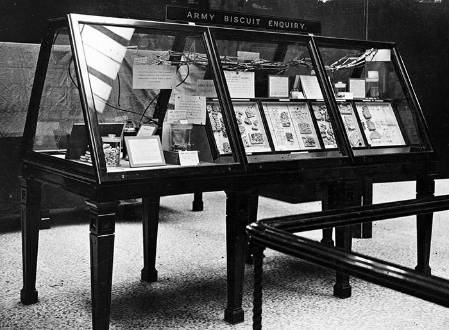If an army marches on its stomach (as Napoleon famously proclaimed), then ensuring soldiers' food is of good quality is essential. So when British troops stationed abroad found themselves receiving tins of biscuits in their ration packs that were infested with moths and beetles, the Museum was called in to investigate the source of these 'injurious insects'.
In 1910, at the request of Brigadier-General S S Long, Director of Supplies for the British Army, sample tins of biscuits were withdrawn from stocks at various stations abroad and sent back to Britain for inspection at Woolwich Barracks by Museum entomologist Dr John Hartley Durrant.
Three possible points of infestation were considered: 1) at home before packing, 2) during transit, or 3) in the country where stored. However, as the biscuits were packed in hermetically sealed tins, it was presumed that - providing the tins weren't compromised - infestation must have taken place in the biscuit factories.
After careful examination of the tins at Woolwich, they were pronounced to be intact, but nevertheless, when opened, contained a foreign flour moth, Ephesita kuehniella, in various stages of development.
In his paper published in the June 1913 edition of the Journal of the Royal Army Medical Corps, Dr Durrant said:
This proved conclusively that infestation had taken place in the factories before the tins were soldered, and indicated that preventative or remedial measures must be undertaken in the factories themselves.
Images from Durrant's paper showing moth-infested biscuits found in tins sent to troops stationed in South Africa and Mauritius.
So down to a biscuit factory in Bermondsey went Durrant to carry out some tests. From these tests he concluded:
- Although it was a given that flour was 'often infested by insects in various stages of development' (perhaps modern-day health and safety excesses aren't so bad after all), if the flour was sifted through a mesh of 320 strands to the inch, that should be sufficient to eliminate ova.
- Temperatures within the biscuits during baking quickly reached 95degC in the first few minutes, and continued to rise to around 100degC in the centre of the biscuit before the end of the baking period. Meanwhile, laboratory experiments showed that 60degC 'may probably be accepted as a maximum temperature above which it is unnecessary to go for the destruction of ova'.
Therefore, Durrant said:
We are of opinion that infestation of the biscuits must take place after baking, during cooling, and prior to the tins being soldered.
Durrant offered a series of suggestions, including:
- Introducing 'screened cooled air during biscuit cooling to render it practically impossible for the moth to oviposit on the biscuits', and
- 'Puncturing the biscuit tins before leaving the factory, raising the temperature to a lethal point, then re-soldering'.
- He also alerted the Board of Agriculture that foreign moth species were present in the UK.
In 1915, to showcase Durrant's work, as well, perhaps, to show support for British efforts in the then-recently commenced World War I, the Museum made a public display of what it dubbed the Army Biscuit Enquiry.
The Army Biscuit Enquiry display: 'The research which has been carried out jointly by the War Office and the Museum has ensured the protection of Army Biscuits from the possibility of such attacks by insects in the future.'
The Museum made many important contributions to the military efforts during the war, in a wide range of areas, including supplying departmental expertise, furthering public education, providing public services and, of course, undertaking military service.
Further WWI posts:




